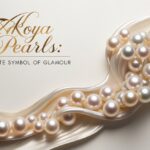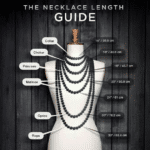Pearls Unveiled: A Dazzling Journey from Ocean to Heirloom
The Ultimate Pearl Guide: Nature’s Timeless Treasures
Ever wondered why pearls have captivated humans for millennia? These lustrous gems, born from the depths of our oceans and rivers, aren’t just pretty baubles. They’re living pieces of history, science, and art rolled into one. Let’s dive into the fascinating world of pearls and uncover what makes them so special. This ultimate pearl guide will teach you a lot about Pearls and how these glamorous gems are so special.
What Are Pearls, Really?
Pearls aren’t your average gemstone. Unlike diamonds or rubies that form deep in the earth, pearls grow inside living creatures. Imagine a tiny grain of sand sneaking into an oyster. Annoyed by this uninvited guest, the oyster starts coating it with layers of nacre – the same stuff that lines its shell. Over time, this builds up into the smooth, shiny orb we call a pearl.
But here’s the kicker – it’s not always sand that triggers this process. Sometimes it’s a parasite or even a piece of the oyster’s own tissue. Nature’s pretty clever, huh?
You might also like Pearl Formation: Unveiling the secrets of Natural vs. Cultured Gems
A Rainbow of Pearls: Types and Colors
You might think all pearls are white, but you’d be in for a surprise. These gems come in a stunning array of colors:
- Crisp whites
- Warm creams
- Mysterious blacks
- Soft pinks
- Golden yellows
- Even rare blues and greens
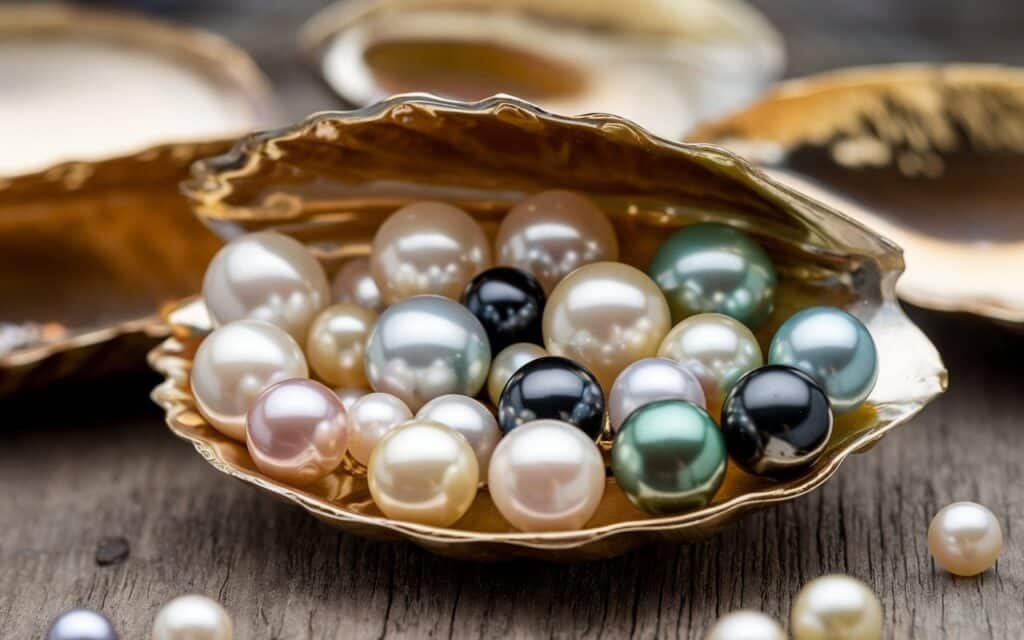
The type of mollusk and the water it lives in play a big role in determining a pearl’s color. For instance, Tahitian pearls, famous for their dark hues, come from black-lipped oysters in French Polynesia.
As for types, we’ve got:
- Akoya pearls: The classic white pearls from Japan
- South Sea pearls: Large, luxurious pearls from Australia and the Philippines
- Freshwater pearls: Versatile and affordable, often from China
- Tahitian pearls: The shimmering darlings of the pearl world
From Sea to Jewelry Box: The Pearl Journey
The path a pearl takes from its watery birthplace to your jewelry box is quite the adventure. Here’s a quick rundown:
- Cultivation: Farmers carefully insert a nucleus into mollusks and tend to them for years.
- Harvesting: After 2-5 years, it’s harvest time! Only a small percentage will be gem-quality.
- Sorting: Experts grade the pearls based on size, shape, color, and luster.
- Matching: For strands and multi-pearl pieces, finding the perfect matches is crucial.
- Design: Jewelers work their magic, setting pearls in precious metals or stringing them.
It’s a labor of love that takes patience, skill, and a bit of luck. This ultimate pearl guide will teach you more about how pearls take birth from water to becoming a piece of art.
Explore Diamonds vs Pearls: Which Gemstone Is Truly More Valuable?
Pearls of Wisdom: Buying Guide
Ready to add some pearls to your collection? Here’s what to keep in mind:
The 5 S’s of Pearl Quality
- Size: Generally, larger pearls are rarer and more valuable.
- Shape: While round is classic, unique shapes like baroque can be stunning.
- Surface: Look for smooth pearls with minimal blemishes.
- Sheen: The best pearls have a deep, mirror-like luster.
- Shade: Choose a color that complements your skin tone and style.
Real vs. Fake: Don’t Get Fooled
With the rise of convincing imitations, it’s crucial to know you’re getting the real deal. Here are some quick tests:
- The tooth test: Gently rub the pearl against your teeth. Real pearls feel slightly gritty, while fakes are smooth.
- The weight test: Real pearls have more heft than plastic imitations.
- The magnifying glass test: Look for tiny imperfections – nature isn’t perfect, but machines often are.
Remember, when in doubt, always buy from reputable dealers who can provide certificates of authenticity.
Caring for Your Pearly Treasures
Pearls might be tough enough to withstand ocean currents, but they need a gentle touch in your jewelry box. Here’s how to keep them looking their best:
- Last on, first off: Put your pearls on after makeup and perfume, and take them off before you start your bedtime routine.
- Wipe them down: A soft, damp cloth is all you need to clean them after wearing.
- Store separately: Keep pearls in a soft pouch, away from harder gemstones that could scratch them.
- Restring regularly: If you wear your pearl necklace often, have it restrung every few years to prevent breakage.
Must Read How to Wear Pearls Everyday For Effortless Elegance
Pearls Through Time: A Brief History
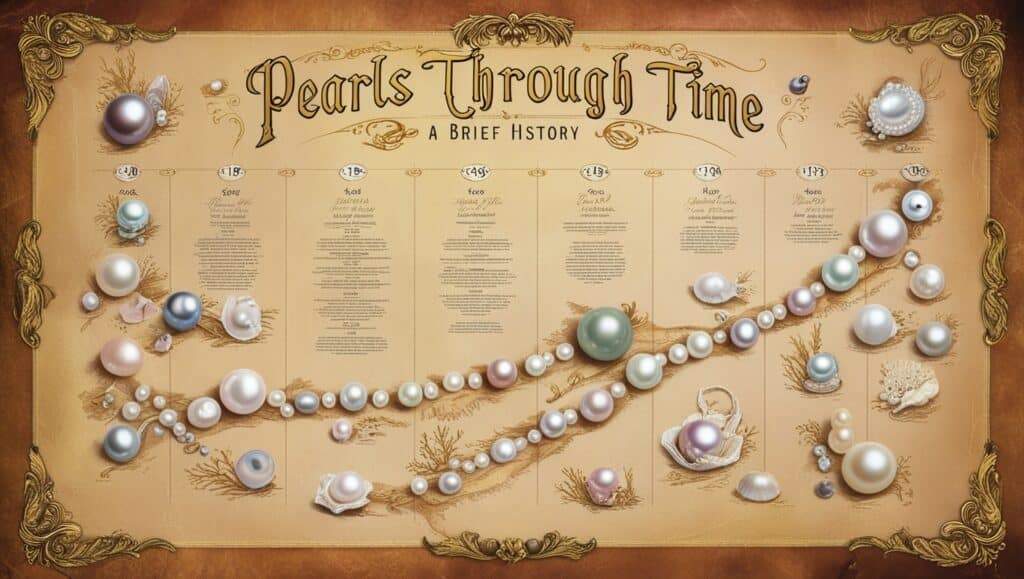
Pearls have been prized for thousands of years. Cleopatra allegedly dissolved a pearl in vinegar and drank it to win a bet. (Don’t try this at home!) In ancient Rome, Julius Caesar loved pearls so much he passed a law saying only the upper classes could wear them.
Fast forward to the 20th century, and we see icons like Coco Chanel and Jackie Kennedy making pearls a symbol of elegant sophistication. Today, designers are reimagining pearls in fresh, modern ways, proving these gems are anything but old-fashioned.
The Science Behind the Shine
Ever wondered what gives pearls their unique glow? It’s all about light refraction. The layers of nacre act like tiny prisms, breaking up light and reflecting it back in that soft, ethereal way we love. This effect, called “orient,” is what sets high-quality pearls apart from the rest.
Pearls and Sustainability: A Modern Concern
As we become more eco-conscious, the pearl industry is stepping up. Unlike mining for other gemstones, pearl farming can actually benefit marine ecosystems when done responsibly. Oyster beds filter water and provide habitats for other sea creatures.
However, it’s crucial to support ethical pearl farms that prioritize ocean health. Look for brands that are transparent about their sourcing and environmental practices.
You will like Tips for Safely Storing Jewelry and Keeping Them for Decades
Beyond Jewelry: Surprising Uses for Pearls
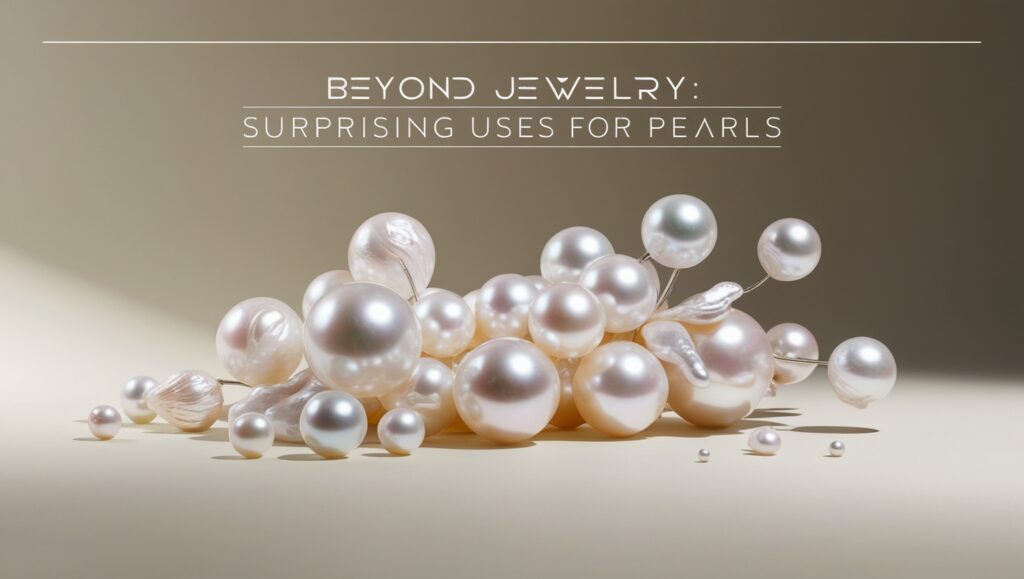
While most pearls end up in jewelry, they have some unexpected applications:
- Skincare: Ground pearl powder is used in some luxury cosmetics for its alleged anti-aging properties.
- Medicine: Research is exploring the use of nacre in bone grafts and dental implants.
- Architecture: Crushed pearls have been used in plaster for centuries, adding a subtle shimmer to walls.
Wrapping Up: Why Pearls Endure
In a world of fast fashion and fleeting trends, pearls stand the test of time. They’re not just beautiful – they’re a connection to nature, history, and craftsmanship. Whether you’re wearing a classic strand or a modern pearl design, you’re carrying a little piece of the ocean’s magic with you.
So next time you clasp that pearl necklace or fasten those earrings, take a moment to appreciate the journey they’ve been on. From humble beginnings in a mollusk to gracing your jewelry box, pearls are truly one of nature’s most remarkable creations.
Remember, the perfect pearl is out there waiting for you. Happy hunting! It’s not just a pretty bauble – it’s a tiny miracle, polished to perfection by nature itself.
We hope this ultimate pearl guide made you a lot more knowledgeable and in no time you can master up the facts about pearls, also read our other articles mentioned here and you’ll get all the information you need regarding pearls.

Astro Sari is a seasoned blogger with a deep passion for pearls and oceanic gems. With years of experience in the field, he brings insightful knowledge and engaging content to Pearl Mystique. His expertise helps readers explore the beauty, history, and significance of pearls in a captivating way.


